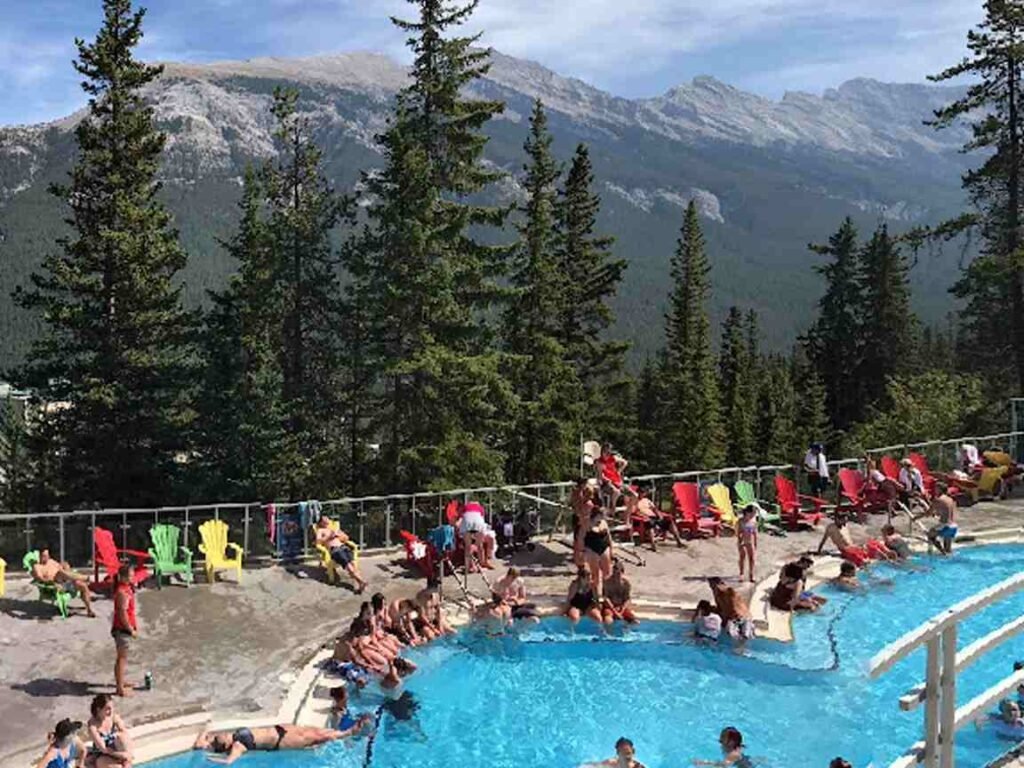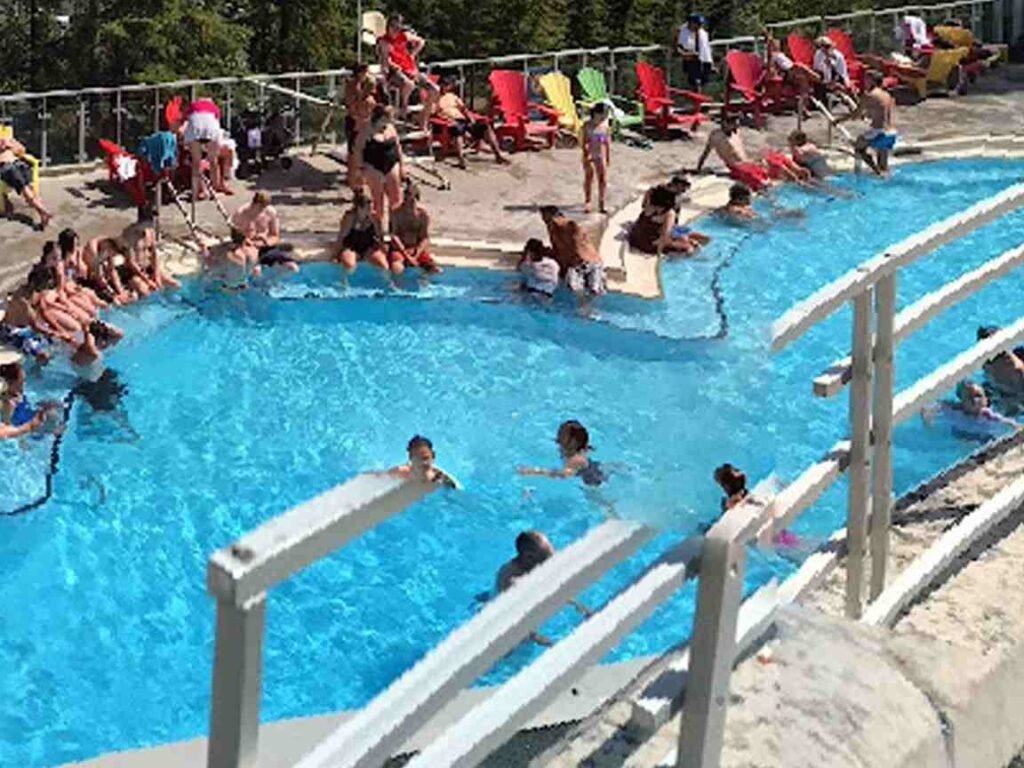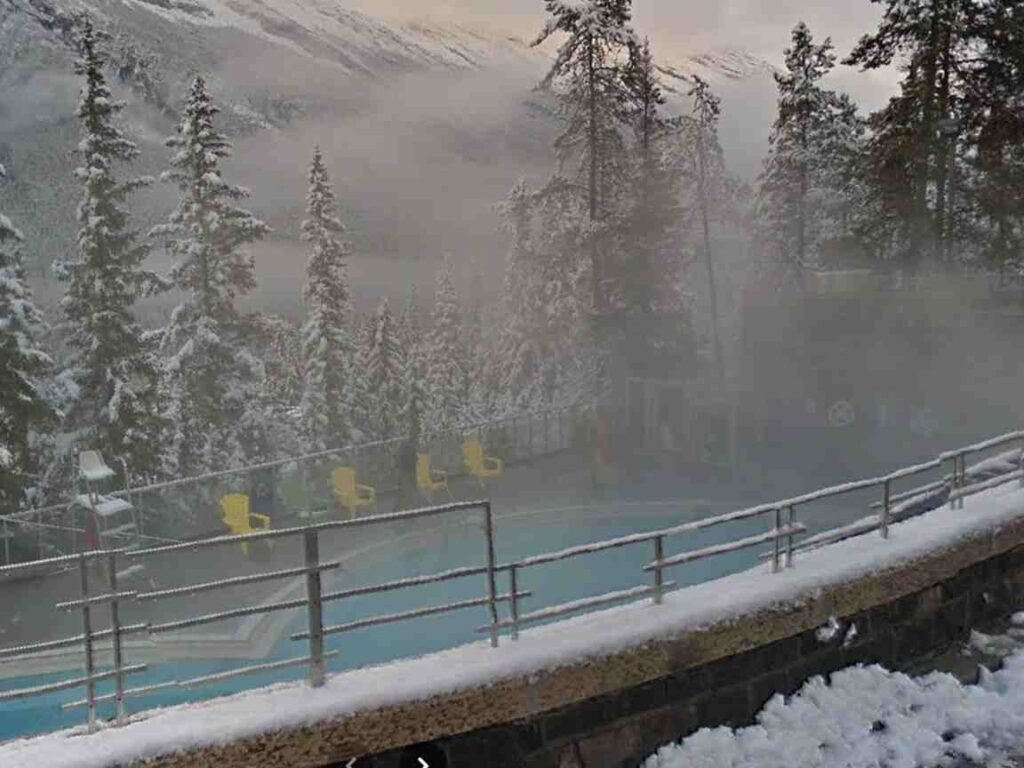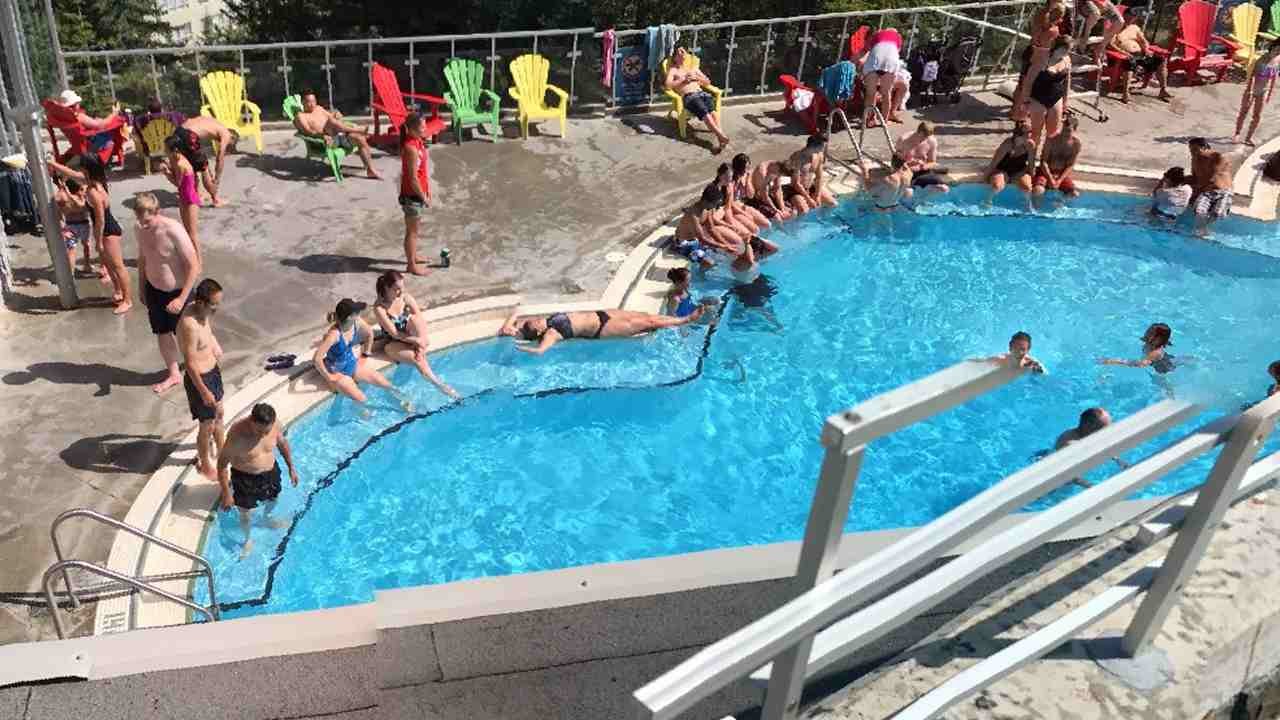Nestled in the heart of Banff National Park, the Banff Upper Hot Springs stands out as a natural spa renowned for its therapeutic qualities. At an elevation of 1,585 meters, it’s the highest operating hot spring in Canada, offering visitors a unique chance to soak in mineral-rich waters surrounded by the stunning Canadian Rockies. These waters, heated deep within the Earth’s crust, bubble up infused with minerals like sulfate, calcium, and magnesium, promising benefits ranging from muscle relaxation to improved skin health. In this guide, we’ll dive into the origins of these healing waters, explore their health perks, and share practical tips to make the most of your visit—all while highlighting why this spot has drawn wellness seekers for centuries.
Whether you’re a hiker looking to unwind after a day on the trails or simply someone curious about nature’s healing gifts, the Banff Upper Hot Springs delivers an experience that blends relaxation with natural wonder. We’ll cover how these springs formed, list the key minerals that make them special, and explain how they’ve been used for healing since Indigenous times. Plus, you’ll find actionable advice to enhance your soak and ideas for nearby wellness activities. Let’s get started with everything you need to know about this mineral-packed oasis.
The Origins of the Mineral Waters
The Banff Upper Hot Springs owe their existence to a fascinating geological process that starts miles beneath the Earth’s surface. Rainwater and snowmelt seep into the ground, traveling through cracks and faults in the Rocky Mountains—sometimes as far as Mount Rundle—before descending over 3 kilometers into the crust. There, geothermal heat warms the water to temperatures as high as 47°C (116°F) in winter, while it cools to around 27°C (81°F) in spring due to increased flow. As it journeys back to the surface, the water picks up a rich blend of minerals from the surrounding sedimentary rock, creating the therapeutic brew visitors enjoy today.
Key Minerals in Banff Upper Hot Springs Waters
Here’s a breakdown of the primary minerals found in these waters and where they come from:
| Mineral | Source | Concentration (Typical) |
|---|---|---|
| Sulfate | Dissolved from sulfur-rich rock | High |
| Calcium | Limestone layers in the Rockies | Moderate to High |
| Magnesium | Sedimentary rock deposits | Moderate |
| Bicarbonate | Carbonate rock interactions | Moderate |
| Sodium | Trace elements in mountain strata | Low to Moderate |
These minerals don’t just give the water its unique character—they’re the backbone of its healing reputation. The process is entirely natural, with no artificial additives (though heated municipal water is sometimes mixed in during low-flow seasons like late winter). For a deeper dive into how hot springs form, check out our guide on .

Health Benefits of the Minerals
Soaking in the Banff Upper Hot Springs isn’t just a treat for the senses—it’s a boost for your body too. The mineral content works wonders, targeting everything from sore muscles to sluggish circulation. Historically, Indigenous peoples revered these waters as sacred, using them for healing long before European settlers “discovered” them in 1883. Railway workers stumbled upon the springs, sparking the creation of Banff National Park, and ever since, people have flocked here to tap into their restorative powers.
Top Health Benefits of Banff Upper Hot Springs Minerals
Here’s a detailed list of how each mineral contributes to your well-being:
- Sulfate
- Benefit: Reduces inflammation and detoxifies the body.
- How It Works: Helps flush out toxins through the skin, leaving you feeling refreshed.
- Best For: Joint pain or post-workout recovery.
- Calcium
- Benefit: Strengthens bones and supports muscle function.
- How It Works: Absorbed through the skin, it aids in muscle contraction and relaxation.
- Best For: Anyone with stiffness or minor cramps.
- Magnesium
- Benefit: Relaxes muscles and calms the nervous system.
- How It Works: Eases tension by regulating nerve signals and muscle responses.
- Best For: Stress relief after a long day.
- Bicarbonate
- Benefit: Improves circulation and balances skin pH.
- How It Works: Enhances blood flow and soothes irritated skin.
- Best For: Dry skin or sluggish energy.
- Sodium
- Benefit: Hydrates skin and supports electrolyte balance.
- How It Works: Keeps skin soft and assists in maintaining hydration levels.
- Best For: General wellness and skin softness.
Historical Healing Context
- Indigenous Use: For centuries, local tribes like the Stoney Nakoda visited these springs for spiritual and physical healing, valuing their mineral content.
- Early Settlers: By the late 1800s, the springs gained fame as a “water cure,” drawing crowds via the newly built Canadian Pacific Railway.
- Modern Day: Today, over 300,000 visitors annually soak here, with many reporting relief from ailments like arthritis or muscle fatigue.
If you’re intrigued by the history, our post on offers more insight.

Enhancing Your Healing Experience
To get the most out of your visit to Nature’s Spa, a little planning goes a long way. The Banff Upper Hot Springs isn’t a fancy resort spa—it’s a public facility run by Parks Canada, designed to preserve its natural state while welcoming everyone. That means no frills like massage tables on-site, but you can still maximize the therapeutic effects with these tips. Plus, nearby wellness options can round out your day.
Tips for Maximizing Therapeutic Effects
Here’s a practical list to enhance your soak:
- Optimal Soaking Time
- Duration: Aim for 20–30 minutes per dip.
- Why: Long enough to absorb minerals, short enough to avoid overheating.
- Tip: Take breaks to cool off on the deck if it’s a hot day.
- Hydrate Before and After
- What to Do: Drink water to replace fluids lost from heat.
- Why: Prevents dehydration, especially at high elevation.
- Tip: Bring a reusable bottle—there are fountains nearby.
- Shower Pre-Soak
- What to Do: Rinse off with soap (required by staff).
- Why: Keeps the pool clean and lets minerals work directly on your skin.
- Tip: Use the on-site showers for convenience.
- Post-Soak Care
- What to Do: Rinse off and moisturize.
- Why: Removes mineral residue and locks in hydration.
- Tip: Pack a light lotion for after your visit.
- Time Your Visit
- When: Go early (9 AM) or late (after 8 PM).
- Why: Avoids crowds, especially in summer.
- Tip: Check the for current hours.
Complementary Wellness Activities Nearby
Banff offers plenty to pair with your hot springs visit. Here’s a table of options within a short distance:
| Activity | Location | Distance from Hot Springs | Benefit |
|---|---|---|---|
| Massage Therapy | Willow Stream Spa | 4 km (Fairmont Banff Springs) | Deep muscle relaxation |
| Yoga Classes | Cedar & Sage Co. | 3 km (Downtown Banff) | Stress reduction |
| Hiking Sulphur Mountain | Trailhead at Hot Springs | 0 km (starts on-site) | Cardio and scenic views |
| Meditation by Bow River | Banff Townsite | 4 km | Mental clarity |
| Sauna Session | Rimrock Resort | 1 km | Enhanced detoxification |
I’ve tried the Sulphur Mountain hike myself—it’s a solid 13 km round trip with a 750-meter elevation gain. Pairing it with a soak afterward felt like a reward for my legs! For more ideas, see our .

Practical Visitor Information
To make your trip smooth, here’s a quick rundown of what to expect:
- Cost: Around $8–$10 CAD for adults (family rates available).
- Amenities: Lockers, changing rooms, towel/swimsuit rentals, café, and gift shop.
- Access: Take ROAM Bus Route 1 from downtown Banff—parking is limited.
- Crowds: Over 300,000 visitors yearly, so plan for peak times (summer afternoons).
Bring your own swimsuit if you’d rather not rent the vintage 1920s-style ones—they’re fun but not for everyone!
Conclusion
The Banff Upper Hot Springs truly is nature’s spa—a geological marvel delivering mineral-rich waters with proven healing powers. From sulfate easing inflammation to magnesium melting away stress, these springs offer a tangible boost to your health, backed by centuries of use from Indigenous healers to modern travelers. At an affordable price and with jaw-dropping mountain views, it’s a must-visit for anyone in Banff National Park. So, why not experience it for yourself? Grab your swimsuit, head to Sulphur Mountain, and let the minerals work their magic. You won’t regret it.

